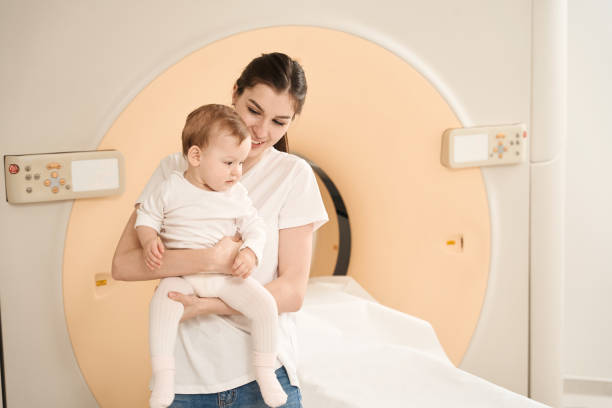Digestive issues in babies often leave parents feeling anxious and unsure. A baby who cries often, spits up, or refuses to eat may have more than a mild tummy ache. Signs like bloating or vomiting can point to deeper problems in the digestive system. Pediatric Imaging plays a role in diagnosing these conditions, allowing for fast and accurate testing that helps doctors treat the issue before it becomes severe.
How Pediatric Imaging Helps Find the Cause
Doctors use pediatric imaging to examine the inside of a baby’s body without the need for surgery. These tests are generally painless and provide detailed views of organs such as the stomach and intestines. This early look allows doctors to identify problems sooner and decide on the best treatment plan. By using imaging, doctors can monitor a baby’s health in a safe and effective way.
Ultrasound is one of the most common imaging tools for infants because it is non-invasive. It helps detect conditions like pyloric stenosis, which causes severe vomiting, and intussusception, where part of the intestine folds into itself. X-rays are also useful for identifying gas patterns and blockages. Another method, called fluoroscopy, uses contrast fluid to observe how food moves through the digestive system.
Common Conditions Doctors Can Detect
Imaging tests play a role in diagnosing various digestive conditions. One common issue they help detect is reflux, where stomach acid moves backward into the throat. A contrast study can reveal how frequently this occurs and how far the acid travels, providing valuable insight for treatment. These tests are especially helpful in identifying the cause of persistent symptoms like heartburn or chest discomfort.
Ultrasound is particularly useful in spotting pyloric stenosis, a condition where a thickened muscle prevents food from leaving the stomach. It also clearly shows intussusception, a serious condition where part of the intestine slides into another section, which can sometimes be corrected during the test itself. Conditions like malrotation or volvulus, where the intestines twist or are misaligned, are visible through contrast studies and require urgent care due to the risk of cutting off blood flow.
Why Quick Imaging Matters
Babies can get sick fast due to their small size and weak immune systems. They lose fluids quickly and cannot say what hurts. Fast imaging helps doctors act before the problem grows worse. The sooner a doctor sees the issue, the faster they can treat it.
What to Expect During the Process
Pediatric teams use imaging tools designed for babies. They pick the safest method based on the baby’s symptoms, age, and overall health. Ultrasound is often the first choice since it works well and does not use radiation. CT scans and MRIs give more detail but take longer to complete.
Get Answers with Pediatric Imaging Today
When it comes to your baby’s health, every moment matters. Pediatric imaging is a safe, effective way to uncover the cause of digestive issues early. These specialized scans offer quick, clear insights so your child’s doctor can take the best next steps. If your baby is showing signs of discomfort or distress, early testing can lead to faster relief and reassurance for you and your family.


